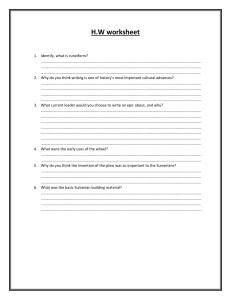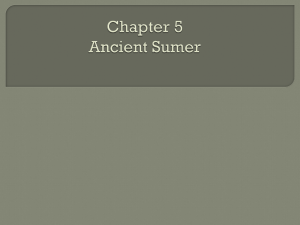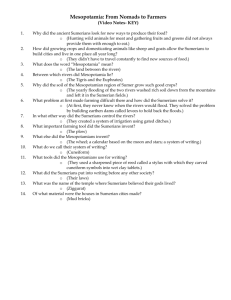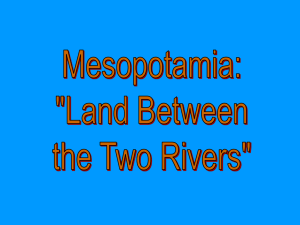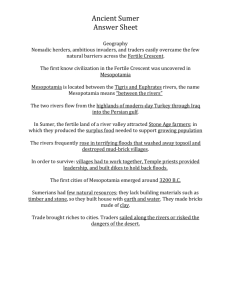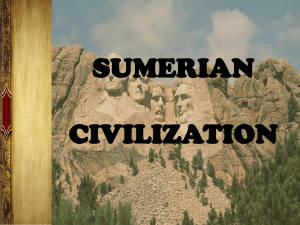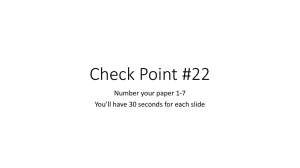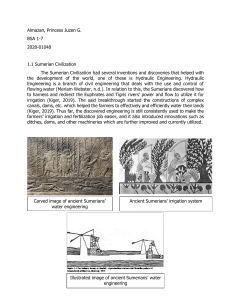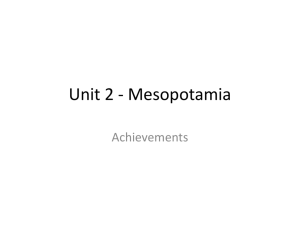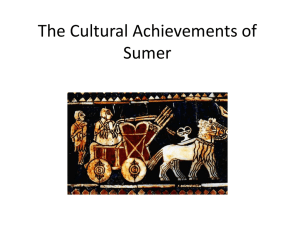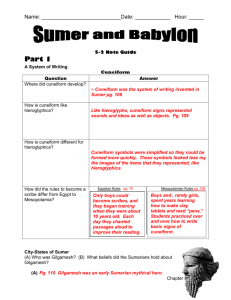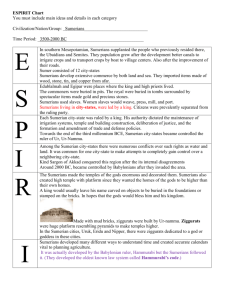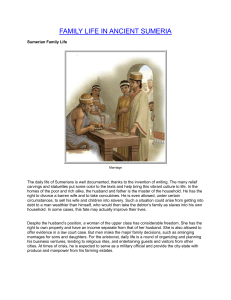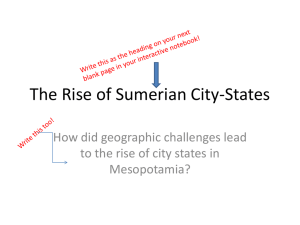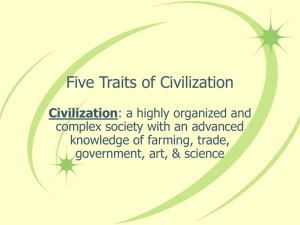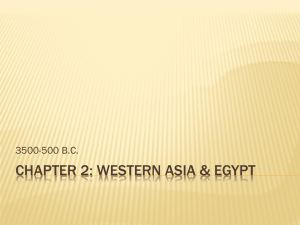Sumerian Achievements
advertisement
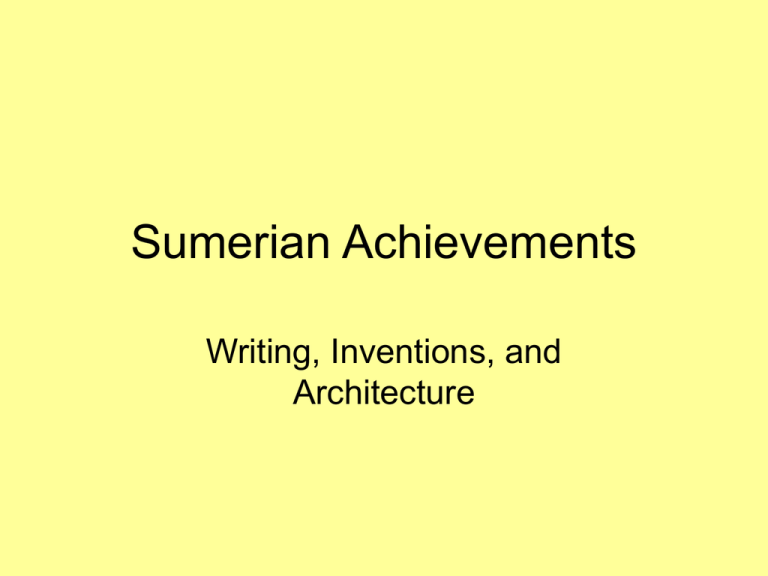
Sumerian Achievements Writing, Inventions, and Architecture Writing • Sumerians were responsible for the 1st writing system, known as cuneiform. • Using a tool called the stylus, they would make wedge-shaped symbols on clay tablets. (early version on the iPad) Scribes • Cuneiform was used in trading to keep track of business records. • The scribe, or writer, had the responsibility of recording items traded. • In addition, scribes could be hired to work for the government or in the temples. Epics • While cuneiform’s original purpose was to record business deals, Sumerians later would discover the joy of writing. • Sumerians wrote down stories, poetry, and songs, usually about the gods or war. • A long poem about a hero is called an epic. • The Epic of Gilgamesh tells the story of the legendary Sumerian king. It was written on stone tablets c.2,000BC. The Wheel • Sumerians were the 1st group of early people to construct carts and wagons using the wheel. • The potter’s wheel used in making clay pots was another invention of the Sumerians. Other inventions • The plow was used in planting crops. • An early clock that used water to measure time was invented by the Sumerians. • Bronze was used to make stronger weapons and tools. • Sumerians even made their own make-up and jewelry. Math and Science • Sumerians developed a number system based on 60. Examples included: dividing a circle into 360 degrees and the year into 12 months. • They wrote down the names of plants, minerals, and animals and used them to create their own medicine. Architecture • The science of building is architecture. • While Sumerian rulers lived in palaces, the average person lived in one-story homes. • The most impressive display of Sumerian architecture was a ziggurat. • Ziggurats were temples shaped like pyramids. • Long staircases led up to the platform and shrine at the top. Art and Music • Cylinder seals were used to show ownership of an item. • The cylinder had a specific design that when rolled over clay would leave an imprint. • Other cylinder seals were used for decoration purposes. • Musical instruments such as the tambourine, lyre, and drums were used for entertainment.
